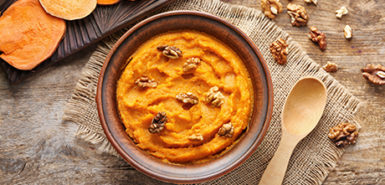
If you’re anything like me, you’ll see the first few weeks of fall as a great time to recommit to personal goals and healthy aging.
That’s always been my pattern, ever since grade school.
As the temperature cools, it serves as a handy reminder to get back on schedule and renew good habits.
I know many women—friends and patients and even myself—who gain weight in the summer because of extra social opportunities, relaxed schedules and warmer temperatures that beg for ice cream.
Around fall, the question then becomes: Where to start?
The first step is to develop tangible goals.
If you want your goals to drive your daily behavior, make them personal and meaningful.
To develop these types of goals, it requires personal reflection and reaching inward. You need to feel—not think, but feel—what is most important.
It can start with thoughts about what you don’t want. For example: You don’t want to suffer a heart attack. You don’t want breast cancer and you don’t want diabetes.
It’s more powerful to then come up with a positive statement, such as, “I want to be active at 90.” Or: “I want to keep my weight off and have a healthy heart so I can hike mountains at 65.” Or: “I want to breathe easy when I walk up from the mailbox.”
These types of goals can keep us on track.
Once you have goals, the next step is to decide what to do different in order to reach your goals.
Think about time like a money budget. There are only so many hours in a day.
Most of us have many obligations with work, family and other activities. Sometimes we forget about taking care of ourselves.
Self-care starts with good habits.
But if you have limited time, which habits are most important? To answer this, I did research and came up with the SEEDS, or Seven Essential Elements of Daily Success.
There is no quick fix for whatever is bothering us, but the SEEDS can help anyone feel better and improve the odds of healthy aging.
1. Water
It’s critical to remember this: It takes three days to hydrate and three days to dehydrate.
We recommend a net of 80 ounces of water per day. (A non-caffeinated beverage with no added sugars is also acceptable.) Net means the total minus the ounces of caffeinated beverage, such as coffee or soda, and minus the ounces of alcohol. Caffeine and alcohol dehydrate you.
An adequate amount of water is important to improve energy, reduce hot flashes and make skin and hair look better.
2. Sleep
The importance of sleep cannot be overstated. Adequate sleep makes it easier to lose weight, have more energy for exercise and maintain a better mood.
People who get an average of seven hours per night face lower risk of diabetes, heart disease, stroke, depression and dementia.
If there were a drug that could do all of these things without bad side effects, everyone would take it. Sleep is free and it only has good side effects. It benefits everyone.
3. Micronutrients
This includes daily Vitamin D (2000 IU), calcium (1200 milligrams) and a multivitamin (any brand).
Vitamin D is important after Labor Day because we typically don’t get enough of this vitamin from the sun in the cooler months. Even on a sunny day after Labor Day, it doesn’t compare to a summer day.
Vitamin D is crucial for calcium absorption and bone health. It also supports healthy blood vessels and is linked to reduced inflammation.
It’s best to get calcium from food such as romaine lettuce and almonds, as well as dairy. A multivitamin is good insurance, just in case you don’t eat what you should every day.
4. Macronutrients
This includes a daily healthy balance of complex carbs, lean protein, healthy fats and one treat.
Complex carbs are starches with color, such as brown rice, sweet potatoes or brown rice pasta. Lean proteins include fish, eggs, chicken, beans or tofu. Healthy fats include avocado, olive oil and nuts.
Treats are items such as alcohol, white bread, white rice and the white flour tortillas we sometimes crave. Indulging in these items can sabotage all the hard work you put in—and it goes straight to your belly fat.
5. Activity
Include a balance of aerobic exercise to get the heart rate up and strength training to maintain and improve muscle mass. Stretch to improve function and reduce pain.
It’s crucial to pick what you like and find a safe, fun and energizing place to do the activities. Sit-ups, walking with squats, lifting weights, yoga and Tai Chi are all part of the equation.
6. Fiber
It is important to get 35 grams of fiber per day to keep bowel movements regular. This also reduces your risk of colon cancer.
7. Gratitude and metered breathing
Practice mindfulness techniques for five minutes, twice a day. Make a list of what you are thankful for.
Gratitude can get us through tough times and stop us from over-reacting. It improves our focus and ability to function and it helps us sleep. It can also calm a hot flash.
Metered breathing is done by sitting and focusing on a not-too-distant spot, closing the mouth and breathing through the nose for several minutes. Concentrate on the sound of the breath. If there is no way you can do this, then practice gratitude as a first step.
We know that daily practice of the SEEDS can help people feel better. When put into practice, it can reduce risk of disease.
Planning is key.
Sunday nights are a good time to put the SEEDS on the calendar for the week.
Identify days for aerobic walking, strength training and stretching. Plan out your meals and menus for the week—including snacks. Develop a strategy for getting enough sleep.
Now is the time to breeze into fall—and the rest of your life!
 /a>
/a>
 /a>
/a>
 /a>
/a>